Vittorio de Sica | 1hr 29min

Even after pensioner Umberto D. Ferrari is threatened with eviction, kicked out of his hospital bed, and forced through the trials of losing and recovering his dog, it is surprising to find that he still has the pride to reject the smallest help from strangers. As he stands outside the Pantheon, he sheepishly wrestles with the prospect of begging, before thrusting his hand out at a passerby. The shame is almost instant – as soon as the man reaches into his pocket to take out a few bills, Umberto averts his gaze and flips his hand over, pretending to test for rain.
It is hardly his fault that he has fallen on such hard times, especially given the bleak social conditions of post-war Rome that have sent masses into poverty. Still, the disgrace of his own inadequacy is harrowing. This should be the time of his life that he is enjoying retirement, and this grand city of immensely rich history and culture should be the perfect place for that. The paradox of its beautiful, ancient architecture coexisting alongside this elderly man’s struggles in Umberto D. though is united under a very simple yet powerful visual conceit within Vittorio de Sica’s mise-en-scène. Rome’s urban landscape of stone columns and vast domes may be majestic in its imposing visual backdrops, but there is little consolation to be found in its cold, harsh discomfort.
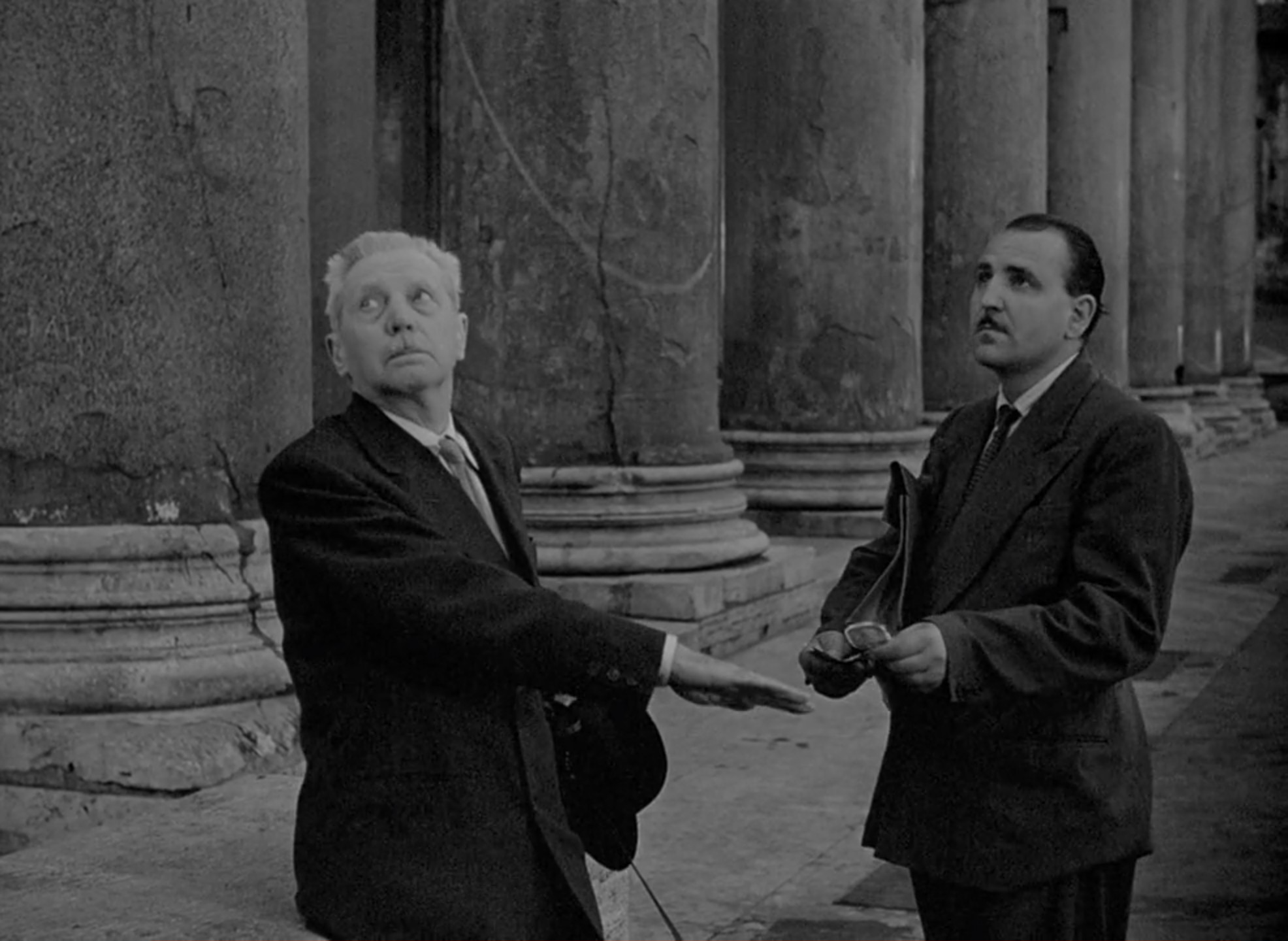
Italian neorealism was definitively on the way out by 1952, and by this point de Sica had already directed what is arguably the movement’s most seminal film, Bicycle Thieves, yet there is nothing in Umberto D. to suggest that his talents had dwindled. Its black-and-white location shooting through Rome’s streets and plazas is as robust as ever, imprinting Carlo Battisti’s sorrowful face in low angles against apartment buildings, and shrinking his feeble stature beneath towering obelisks. Equally crucial to de Sica’s imagery as well is the constant bustle of everyday life surrounding Umberto – in fact, it is hard to find any public space that isn’t crawling with workers on scaffolding, children playing games, or trains speeding through backgrounds.
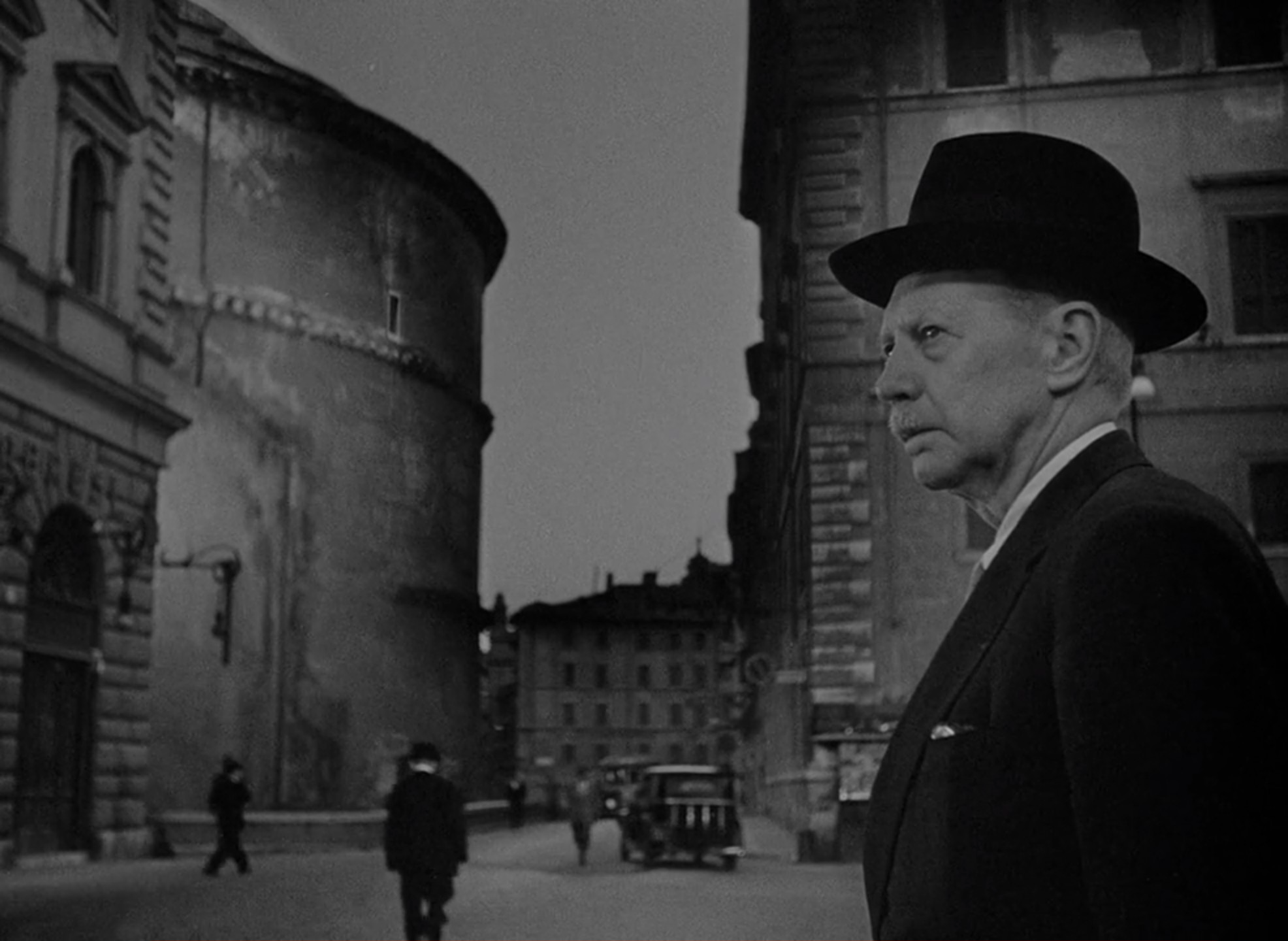


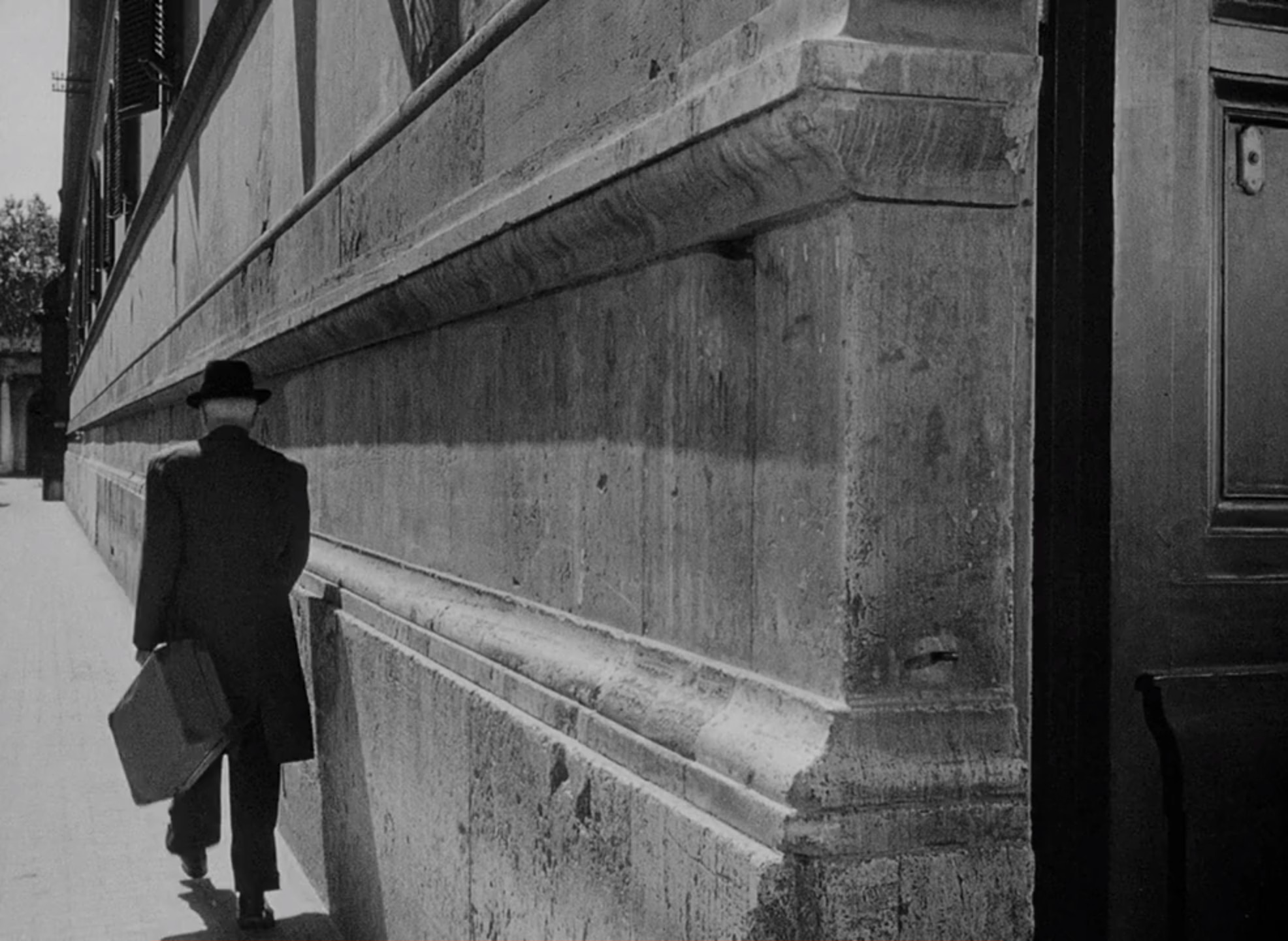
De Sica is all too aware of the irony in Umberto’s emotional isolation here, given the fervent activity and density of the city around him. There is little empathy to be found anywhere along the social ladder, from the unseen government bureaucrats with their scant welfare payments, to Umberto’s own landlady who renovates his apartment without warning. Her plan is to make one giant living room in the building, but right now the giant hole in the bedroom wall is nothing more than a visual manifestation of his crumbling life, and a crude opening through which de Sica’s camera sensitively frames his loss of dignity.


At the very least, there is some comfort to be found in Umberto’s few companions. Just as Maria, the landlady’s maid, helps his situation as much as she can from her limited position, he too is determined to find the father of her unborn baby so that she may have some financial support. Both she and Umberto may belong to entirely different generations, but there is no competition between his encroaching homelessness and her teenage pregnancy. Instead, this elderly man and young woman share a common empathy for each other’s troubles, generating their own warmth in an otherwise hostile environment.
Even with such high narrative stakes though, the soul-crushing mundanity of day-to-day survival bleeds through in Umberto D. De Sica plays it out with an understated sincerity, recognising that everyday responsibilities do not disappear simply because one’s welfare is in peril, and even spends four minutes studying Maria’s internalised pain as she makes herself coffee. It takes her three strikes of the match before it lights up, though before she gets it to the gas stove, it snuffs out. Two more strikes do the job, and with the fire now burning she stops by the window to gaze outside at the dilapidated apartment buildings neighbouring her own. Over at the sink, she takes a quick drink from the tap before filling the kettle and placing it on the stove. She pauses, her hands reaching down to caress her belly, and then as she sits down to grind the coffee beans, we register the streak of single tear on her cheek. The moment the doorbell rings though, she is snapped out of her poignant reverie, and quickly rubs her face clean before answering.
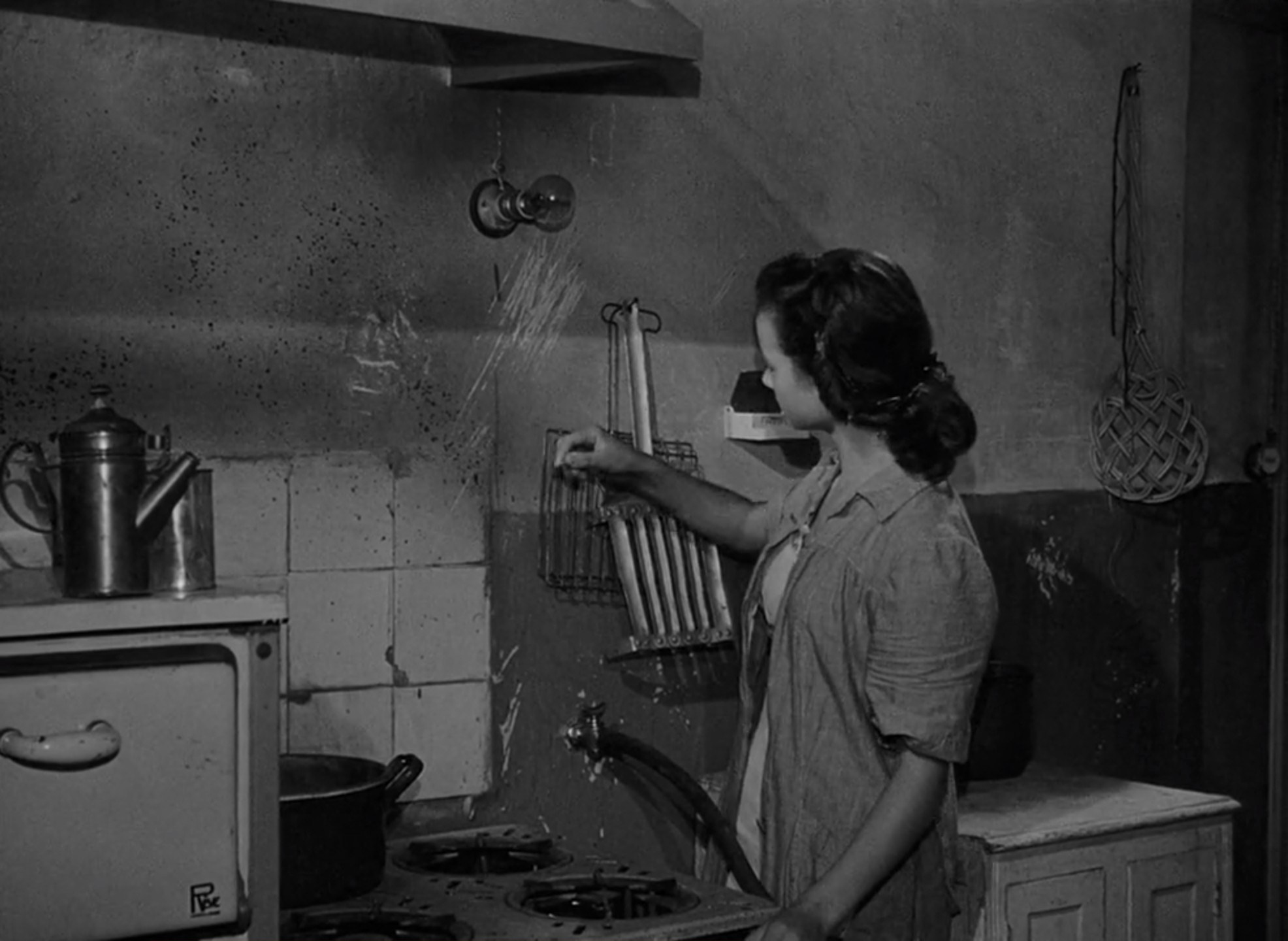

In an era that saw Hollywood blowing emotions such as these up into enormous Technicolor musicals and melodramas, de Sica was expressing them as uncomfortable interruptions to his characters’ efforts to stay alive. It is clear to see how much texture these tiny formal details bring to his characters, layering their journeys with struggles beyond their primary objectives. It is only incidental that Umberto’s apartment is infested with ants and that his sleep is constantly disturbed by loud noises from outside the building, as these facts of life sink into the background along with the threat of any future war. After all, there are only so many things one man can invest in emotionally before letting everything else fall by the wayside.
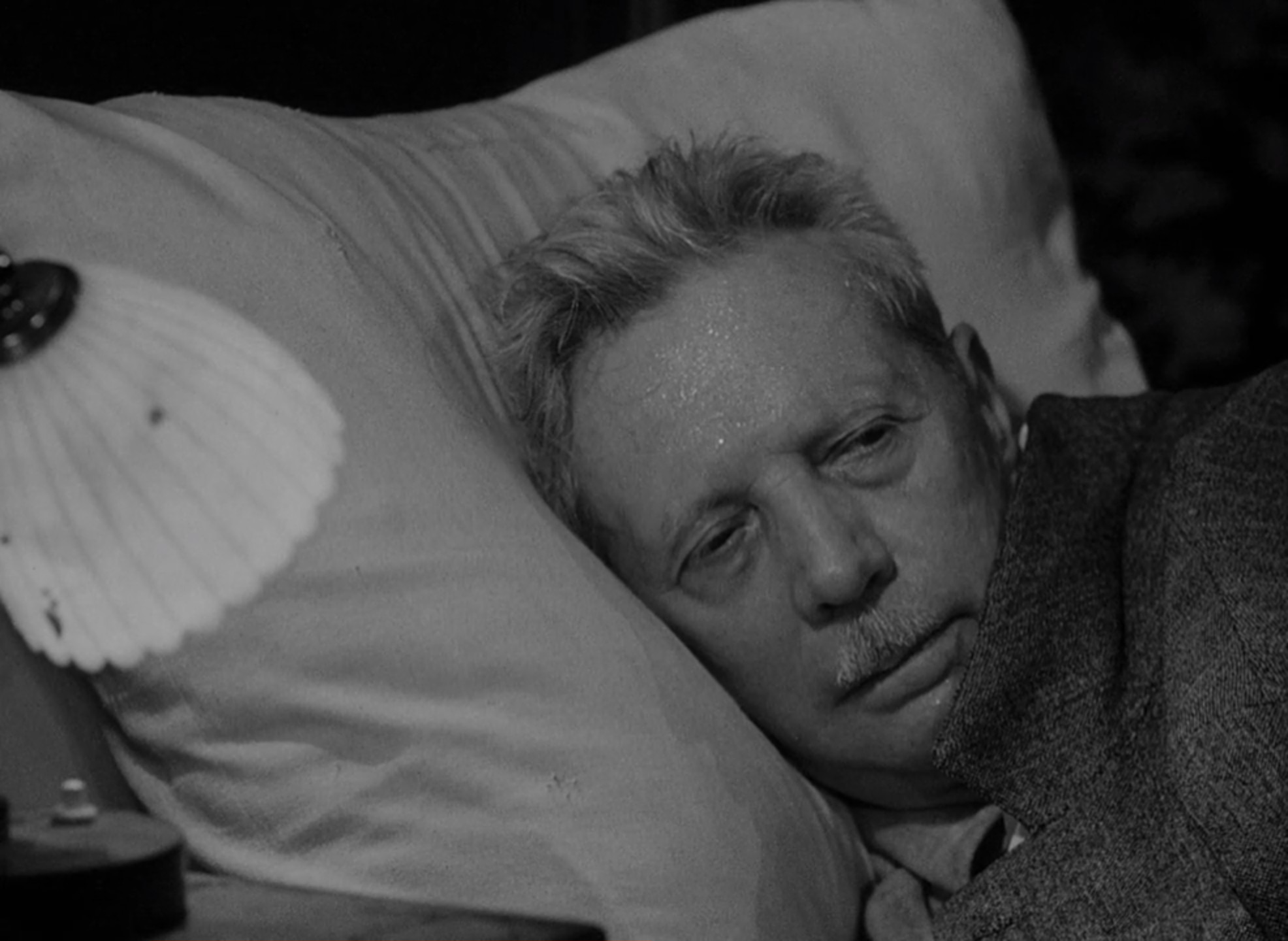
Even with all these pressures falling on Umberto’s shoulders though, it tells us a lot about his character that he doesn’t even think twice to prioritise finding his dog the moment he learns of his escape. Where children were typically used in other neorealist films as emblems of innocence, here Flike represents everything pure and good that the world has to lose should it continue along its path to total degradation. Umberto’s relief upon finding his best friend at the pound is immense, though the imagery there is harsh. With dogs being hoisted up their necks, kept in small cages, and shoved into incinerators, de Sica effectively draws bleak visual parallels to the concentration camps of the Holocaust. The aftershocks of World War II are evidently still reverberating across Europe.
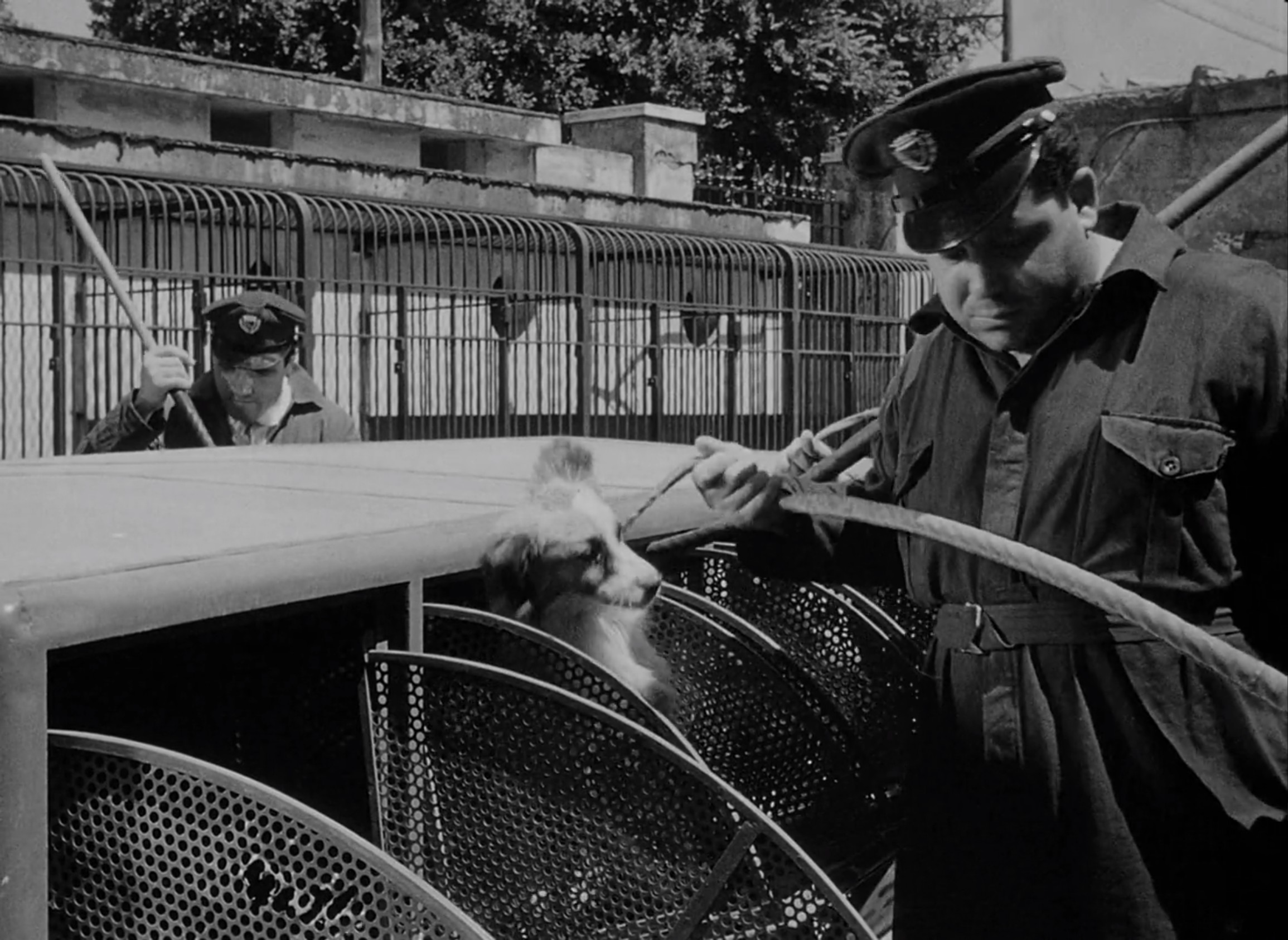
As long as goodness exists in a world burdened by historical trauma though, there is also hope for Umberto. No matter how hard he tries to hand his dog off to someone else, he simply will not leave his side, right up until he finds himself trapped in his master’s grip in the path of an oncoming train. Just as Umberto rescued Flike from certain death at the pound, Flike similarly saves him from suicide here, squirming out of his arms and leading him off the tracks.
The trust between man and animal has been momentarily broken, but as a result the roles have been swapped. It is now Umberto chasing after his disillusioned dog, marking the opposite dynamic of what we witnessed just a few minutes earlier. It takes genuine remorse and humility to restore that connection, but the fact that it can be mended at all speaks to the uniqueness of this relationship that responds to betrayal with compassionate mercy – a quality that is scarce to be found elsewhere in this amoral environment. While the rest of the world crumbles in Umberto D., de Sica emphasises the crucial role that our humanity plays in keeping us alive, distilling this warm, poignant sentiment down to a lonely man and his dog playing side by side in his very last shot.
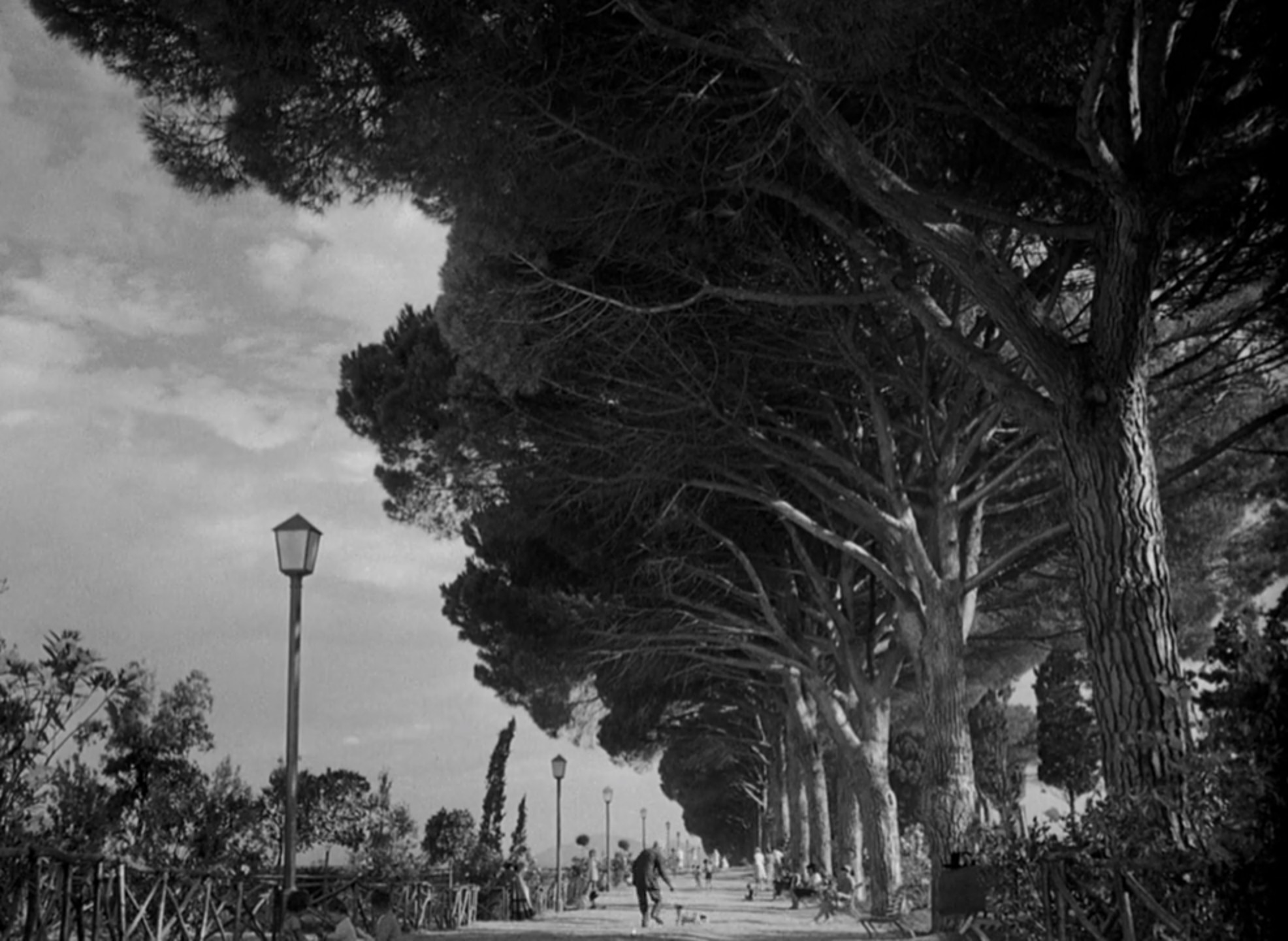
Umberto D. is currently streaming on The Criterion Channel.

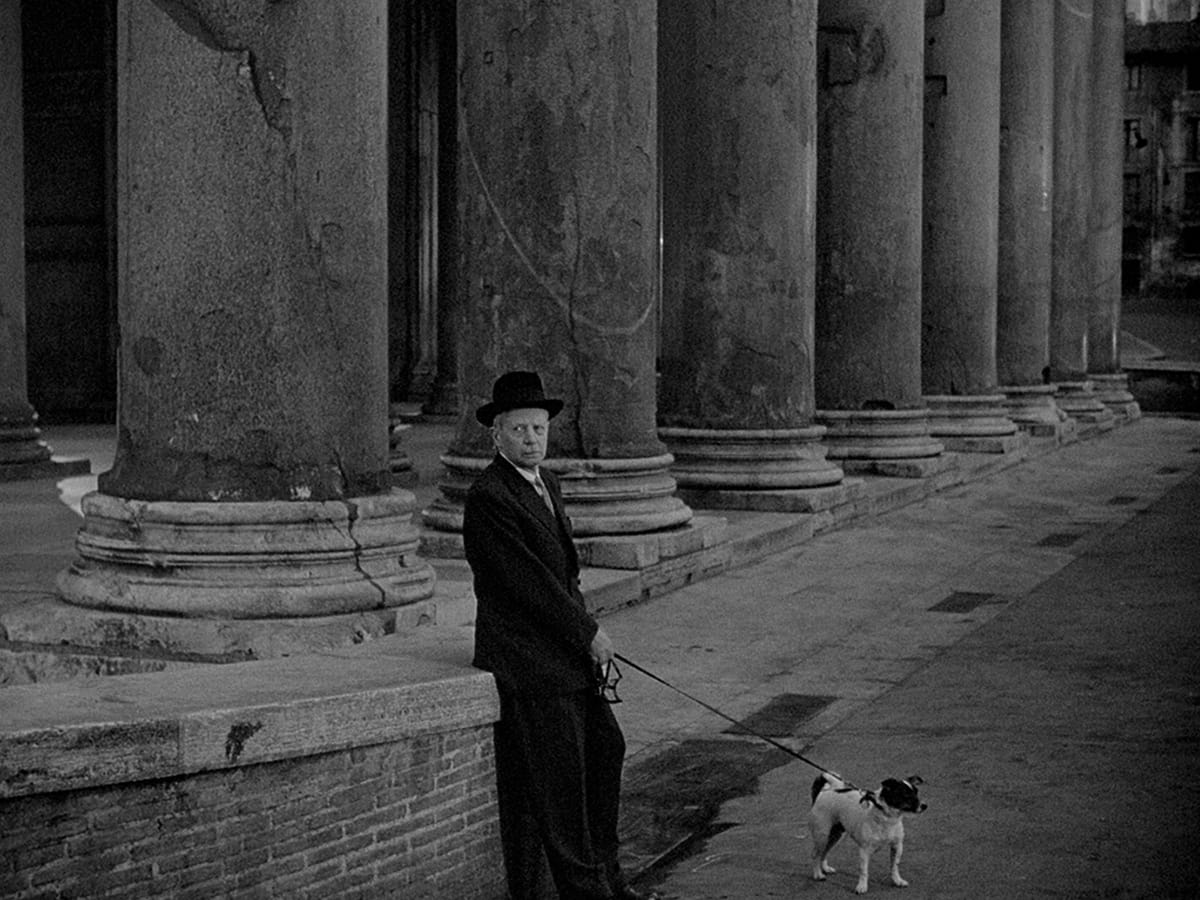
Pingback: The 100 Best Male Performances of All Time – Scene by Green